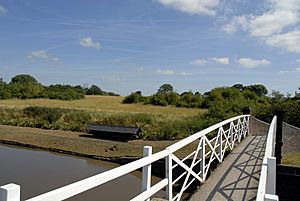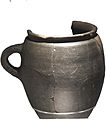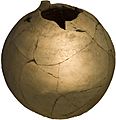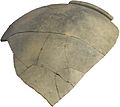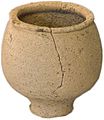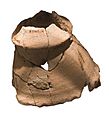Roman Middlewich facts for kids
The town of Middlewich was first built by the Romans. They called it Salinae, which means "salt works," because there was a lot of salt in the area. Middlewich was one of their main places for making salt.
The Romans built a strong fort at Harbutts Field, just north of the town. Recent digs have found more Roman activity south of the fort. They even found an old well and part of a Roman road. Another dig in 2004 found even more signs of Roman life.
A Roman Road called King Street runs between Middlewich and nearby Northwich. Some people thought this road was the first path the Romans took to conquer the North West of England. However, pottery found there suggests this might not be true.
Middlewich was an important meeting point for seven major Roman roads. Because of this, it was once known as 'Medius Vicus', which means "the town at the junction of the roads."
Discovering Roman Treasures
You can find many cool Roman objects in the Middlewich Library. These items help us learn about what life was like long ago.
-
An Amphora was a tall jar used to carry things like olive oil, wine, or even fish sauce across the Roman Empire. This one was later used for making salt. You can see the letters AMVRCO scratched on it, which means "salt waste."


